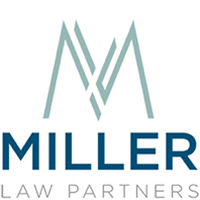On January 6, 2022, Cal/OSHA updated its FAQs on COVID-19 Prevention Emergency Temporary Standards (the “ETS”) to incorporate the December 30, 2021 guidance from the California Department of Public Health (“CDPH”) on isolation and quarantine periods.
Cal/OSHA’s updated isolation and quarantine period standards will go into effect on January 14, 2022, when the latest revision to the ETS will become effective.
Please note that our previous update of January 4, 2022 discussed the CDPH and Los Angeles County Department of Public Health’s (“LADPH”) updated COVID-19 guidance, which applied to the general public ONLY and did NOT apply to the workplace.
The January 6, 2022, Cal/OSHA update clarifies that the ETS will now, as of January 14, 2022, also align with CDPH and local health department guidance, subject to the following circumstances:
- The recommended isolation and quarantine periods in the ETS (also called “exclusion periods”) will be overridden by any applicable isolation or quarantine recommendation by the CDPH or the local health department with jurisdiction over the workplace, as follows:
- IF the periods recommended by the CDPH or local health department are shorter than the periods required by the ETS, the shorter exclusion period applies.
- BUT, if the CDPH and local health department isolation and quarantine recommendations differ, the longer exclusion period between the two will apply.
- For example:
- Assume that, as of January 14, 2022, then-current CDPH recommended isolation and quarantine periods are shorter than the exclusions periods that will be required by the ETS. The CDPH recommended isolation and quarantine periods will trump the ETS exclusion period in this scenario.
- Assume that, as of January 14, 2022, then-current CDPH and, for example, LADPH, recommended isolation and quarantine periods are shorter than the exclusion periods that will be required by the ETS. In this scenario, the longer isolation and quarantine period between the CDPH and the LADPH will apply and override the ETS exclusion period.
Workplaces that include healthcare personnel in any setting must follow the CDPH Guidance on Quarantine for Health Care Personnel All Facilities Letter (“AFL”), which will be addressed in a subsequent MLP update. In the meantime, the AFL can be accessed here: AFL-21-08.6.
Table 1: Exclusion Requirements for Employees Who Test Positive for COVID-19 (Isolation)
|
Requirements apply to all employees, regardless of vaccination status, previous infection, or lack of symptoms. |
* Antigen test preferred. |
Table 2: Employees Who Are Exposed to Someone with COVID-19 (Quarantine)
|
Requirements apply to employees who are:
+Includes persons previously infected with SARS-CoV-2 within the last 90 days. ++See Table 4 for definition of booster eligible. |
* Antigen test preferred. |
+++Employers are not required to exclude asymptomatic employees in this category if:
- A negative diagnostic test* is obtained within 3-5 days after last exposure to a case;
- Employee wears a face covering around others for a total of 10 days (please refer to the section in this FAQ on face coverings for additional face covering requirements); and
- Employee continues to have no symptoms.
Table 3: Employees Who Are Exposed to Someone with COVID-19 (No Quarantine Required)
|
Requirements apply to employees who are:
× (See Table 4 for definition of booster-eligible) |
Employees do not need to quarantine if they:
|
In addition to the above, pursuant to section 3205(c)(10)(E), when an order to isolate, quarantine, or exclude an employee is issued by a local or state health official, the employee shall not return to work until the period of isolation or quarantine is completed or the order is lifted even if the order exceeds the specified exclusion requirements in the ETS or CDPH recommendation.
As additional guidance is issued, we will keep you informed.

